Vampires have a lot of history inside and outside Magic, and they are in evidence again in Magic: the Gathering with the return to Innistrad. This will be the third time we've visited Innistrad in a set, and this time in double dose, with Innistrad Midnight Hunt and Innistrad: Crimson Vow.

In today's article, we will have the opportunity to learn about the origin of Vampires, both in-game and outside it. Learning a little more about the tribe, we will be able to discover the reason why these beings conquer fans all over the world.
Origins
The term vampire is much more recent, in relation to its history: some authors of ancient books and tales, using stories and legends (mainly from Europe), appropriated these legends to give life to more modern stories, starting at the end of 19th century a more humanized and refined stereotype of vampires, which followed throughout the 20th and 21st century, especially when we mention the Twilight book and movie saga.
A vampire is a blood-feeding being, but the origins of the word are still conflicting among some cultures. They are divided a lot between European countries that are from nearby regions, such as Hungary, Croatia and Slovakia. In the spelling we know, or very similar to it, the first record was in French vampire, in the 18th century; however, the first record, albeit in a different alphabet language but referring to that same word, was in Archaic Russian, in the year 1047, written as an evil vampire in a Russian transcription of the book of Psalms at the time.

The notion of vampirism has existed for millennia in cultures such as Mesopotamia, Hebrew, Ancient Greece and also the Roman, and in them contained legends of demons and spirits who were considered the vampires of the time for sucking human blood.
However, despite the occurrence of vampire-like creatures in these ancient civilizations, their folklore originated almost exclusively in southeastern Europe in the early 18th century, in the region of Hungary, when the oral traditions of many ethnic groups in that region were registered and published.
In many cases, vampires are specters of evil beings, suicide victims, or wizards, but they can also be created when an evil spirit possesses a body or is bitten by a vampire. Belief in such legends pervaded so much in some regions that it caused mass hysteria and even public executions of people believed to be vampires.
From these legends, another one was born, about a disease that arose in a war, bringing to light yet another dispute over the origins of the word vampire. Several sources claim that the word "vampire" was first written in 1725, in the report of an army doctor of the Holy Roman Empire, shortly after the victory against the Ottoman Empire at Petrovaradin (1716) and the Siege of Belgrade (1717), upon arriving in the lands of the Slavic peoples, the Austrians came across reports of these strange creatures, which they had never heard of before.
Over a period of more than a week, nine people died after being visited by a man in a cape overnight, recognized as Petar, who had been buried ten weeks earlier. Afterwards, the villagers exhumed his body, drove a stake through his chest, and burned him to ensure he wouldn't attack anyone else.
A few months later, an epidemic spread across the entire region of Eastern Europe, with many reports of vampirism. Many doctors were sent in, confirming that the bodies had all of their blood taken or sucked out while alive, and some appeared to have blood from other humans as well. As we said, the hysteria was huge for that time, and any local rumors turned into a tale of vampire attack.
After that time, the legends grew with each passing year and spread throughout Europe, reaching Asia and the Americas, each region adding to its local legends, and perhaps losing a truth that the residents of that region could experience. This until reaching the 20th and 21st century, in which they are explored in many books and movies, becoming very popular and even envied in their immortal living conditions and with supernatural powers.
Count Dracula

We could not fail to mention the most famous vampire of all time, Count Dracula, who has many stories created around his fame, making him scarier or not, depending on the theme of the plot that surrounds him.

He first appeared in the book of the same name by Irish author Abraham “Bram” Stoker, and this was the fifth published book of his career. Bram Stoker had many inspirations and influences to come up with a book with a character who would become an icon to this day, having influences from his boss, Sheridan Le Fanu who had published Carmilla, a horror novel that marked an epoch in 1872, among others, which also stood out as an influence; the story is 78 years earlier, by the English author John Polidori, who turned the freaks into aristocrats, elegant and sophisticated.

Some also say that the real inspiration came from a Romanian prince named Vlad Tepes, who lived in the mid-fifteenth century. But he wasn't considered a bad person, nor was he a vampire.
In fact, he was a national hero, called Vlad Dracula or Vlad III (son of the dragon), as his father was of the order of dragons, knights who defended Christianity against the Ottoman Turks. But he was a national hero only for his friends because by his enemies he was seen as cruel and bloodthirsty, as his troops trying to conquer Eastern Europe were very violent, and used torture and mutilation. There is a legend that Vlad III drank the blood of his political enemies at a dinner he himself hosted, as an ambush, and his soldiers attacked them. Perhaps it was for these and other tales about the prince that Stoker chose the name.
As we've seen, vampires have a lot of history and many cultural references can be explored.
Let's go now into Magic. I notice that we have summarized the most important points, as they are long and content-rich stories.
Vampires in Magic
Magic, in terms of diversity of creatures, is very broad. Perhaps it has almost all kinds of fantastical and mythological creatures, or at least the best known worldwide.
Speaking of cards, there are currently around 272 creatures in the game that have the Vampire type. This for now, of course, as Innistrad's new sets should bring much more of this type of creature, which despite being initially exclusive in black, can now be seen in all other colors, as shown in the image below:

The first vampire card appeared in the first Magic set, on Alpha, and was Sengir Vampire.

Since Magic's first set, the one that brought in the most vampires was Innistrad, which was released twice in blocks: the first was Innistrad, on September 30, 2011, kicking off a new post-rotation Standard season.
Following, in February came Dark Ascension, and closing the block in May, Avacyn Restored.
The theme, of course, was a hit, with all the bizarre, suspenseful, frightening stories and creatures that soon brought a second set of the same theme, and just under five years later, on April 2, 2016, we had the beginning of another block, this time with two sets attached to it: Shadows over Innistrad, and then, in July, Eldritch Moon.
Some players said that the latter was more successful than the former. What can be really said is that both were successes, and a plane like Innistrad deserved a new set, and this year we can celebrate with this return, emphasizing, in Innistrad: Midnight Hunt, the tribes of Werewolves and Vampires.
Vampires in the Lore
Innistrad is obviously a plane filled with all kinds of vampires, not just humans, as a vampire can turn any animal in the multiverse into a vampire to suit his needs.
Arguably, vampires were born in Innistrad thousands of years ago, to be exact in 2440 AR, when Edgar Markov creates the curse of vampirism.
Before being one of the most famous and powerful vampires in the multiverse and especially in Innistrad, Edgar Markov was an alchemist in the land that later became Stensia. The hunger in the region was overwhelming and Edgar, to help all the families in the region, sought a solution to feed the families.
Of course, his solution was not the most pleasant, as his plan was to submit people to a ritual in which he would make them feed on human blood, thus providing food for some, reducing crops and, by feeding on their peers, would decrease the starving population. This is how vampires were born in Innistrad.
Over the years, many of these vampires created by Edgar have formed their families, according to their needs and interests. There were originally twelve bloodlines, which originated long ago in a ritual that had something to do with the progenitor of all vampires, Edgar Markov. Three of these bloodlines have completely died, another five are minor and of almost no relevance.
Let's see below the four lineages that still remain, and some of their influences and characteristics:
Falkenrath - The Falkenrath line, concentrated more on Stensia than the Markov line, had a famous falconer (now dead) as its parent and remains associated with long-range activities and predation. The Falkenrath are the boldest to walk among humans, taking pleasure in choosing their victims from the depths of human communities that consider themselves safe.
The elders of Falkenrath are more likely to master flying powers than vampires of other bloodlines. Even before Avacyn's return, the vampires of the Falkenrath line were the boldest about their predation. Consequently, the angels slammed into Falkenrath's line when Avacyn emerged from Helvault.

Markov — Markov is the most prestigious and possibly the most widespread vampire bloodline in Innistrad. The Markov elders seem to have a talent for psychic magic.
Stromkirk — Nephalia has always been lightly forested, but in the past century, its few trees have been cut down or destroyed due to the vampires' fear of being used as stakes and other weapons. Runo, the progenitor of the Stromkirk line, was astute in his plan to remove the trees.
Early on, using his glamour and considerable wealth, he turned the human population into artisans, supporting their efforts to build beautiful cities, proud ships, and vigorous provincial trade—all based on wood.
Affluent and abundant humans are good business for Stromkirk, so Runo has become something of a secret Nephalean patron, supporting master craftsmen and commissioning buildings, towers and ships while financing any vampire-friendly efforts by alchemists and wizards. Since then, Nephalia has become widely known for its masterful wood craftsmanship. Nephalia's buildings, ships, chapels and houses boast a distinctive and inspired art that sets it apart from other provinces.

Voldaren — Four miles from the end of Ziel Pass, shrouded in mist and surrounded by the jagged peaks of Stensia, is Voldaren's massive estate. The homeland of the Voldaren bloodline is populated by several castles, mansions and forts. The main fortress protecting the property is the Lurenbraum Fortress.

But it's not just Innistrad that vampires live in, other planes of the multiverse have their own vampires, some very different.
Vampires still appear in Lore in twelve other planes, many of them less important than Innistrad, such as:
Alara, Arcavios (Strixhaven), Dominaria, Ixalan, Kaladesh, Kaldheim, Mirrodin, Rath (artificial plane presented in Tempest, Stronghold, Exodus and Nemesis), Ravnica, Shandalar, Tarkir and Zendikar.
In the planes of Dominaria and Zendikar, they still played a more relevant role in relation to the others mentioned.
Dominaria
In Dominaria, vampires descend from three bloodlines, with different creations and origins from each other.
Sengir Vampires: descended from Baron Sengir of Dominaria and Ulgrotha. To find them on the plane, you must look for them in Aerona and in the wells of the Cabal in Otaria.
His physical features include a misshapen body, fierce eyes and pointed ears.
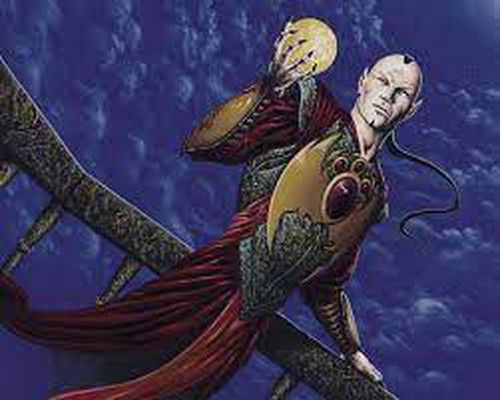
Krovikan Vampires: The Krovikan vampires chased the plagues that plagued the streets of Krov city during the Ice Age, led by their queen Garza Zol.
They are pale looking, with porcelain skin and blood-red eyes.

Vampiric Dragons: They appeared in a short story in the anthology "The Monsters of Magic".
They are brutally dangerous vampires, combining the forces of both dragon and vampire races with lethal effect.
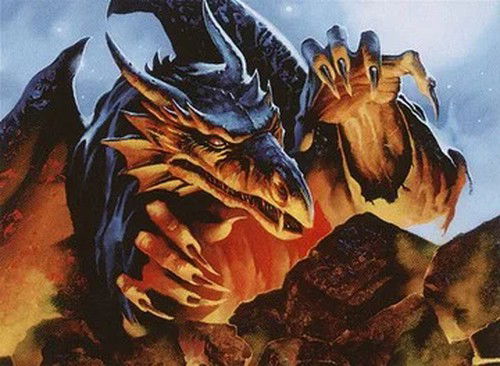
Zendikar
In Zendikar, vampires are associated with black mana, as their existence depends on draining other beings' lives to keep themselves alive. They are not moral creatures, and think that the strong can take whatever they want from the weak. They are aggressive and ferocious, and like to hunt their prey violently and fearfully.
There are also the Bloodchiefs, which were created by the Eldrazi Ulamog, with a vital longevity of up to 200 years. They were initially 12 and their creation story goes back thousands of years, when the Eldrazis were imprisoned and the very malevolent creative force of Ulamog became an infection that spread among those who lived in the mountains of Akoum.
These people, it is not known for sure whether they were human, Kor, or another race, began to worship imaginary deities in these mountains, close to the prison where they created a temple. These cultists underwent a severe transformation, and only these 12 survived and became the first Bloodchief vampires. They all and their descendants were enslaved by Ulamog, and lived as his slaves for millennia. After Nahiri reinforced the Eldrazi prison, Zendikar's vampires were finally freed.
Over the years, the remaining Bloodchief have split into five families, who live in cultured and decaying cities on the humid continent of Guul Draz. Each family controls its section of the vampire city of Malakir. They are:
Kalastria — The richest and most powerful family, calling themselves Highborn. The head of the clan is Drana, Kalastria Bloodchief.
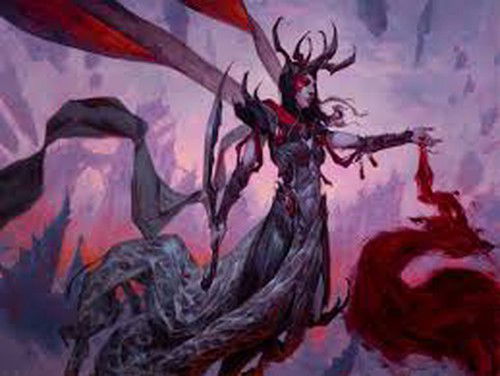
Nirkana — Notorious and bloody murderers, much feared. Among them are Vampire Lacerator, Nirkana Assassin and Nirkana Cutthroat.
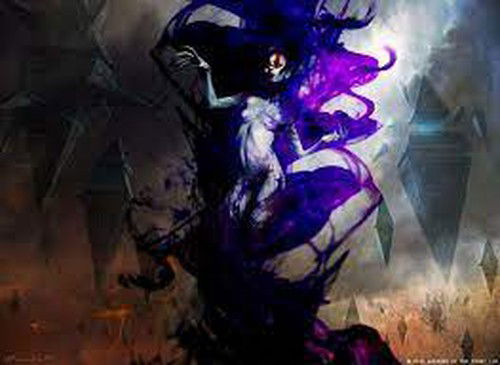
Emevera
Urnaav:
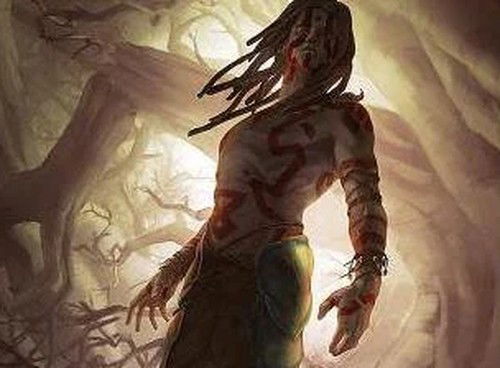
*Regarding both Emevera and Urnaav, we can't find enough information to describe it, we just know they're part of the Bloodchiefs.
Ghet — The poorest and least powerful of the families. The head of the clan was Kalitas, Bloodchief of Ghet.

Vampires in the Formats
Modern
In Modern, there are 235 vampires, mostly black. However, there are also vampires belonging to the other mana colors.
There are very few decks containing solely vampires, and not even relevant Pro Tour or Grand Prix results. In these ten years, we had very timid appearances in 2011, even smaller in 2015, 2019 and 2020 in the format.
Speaking of the last year's deck, Japanese Chiba Kazuya came first in a daily Hareruya tournament, with an Orzhov deck:
Pioneer
In Pioneer, there are 153 creatures of the tribe, and they have been present in the format practically since its creation. Of course, they are not tier 1 decks, however they do have their tribal strength and format relevance.
In those three years of Pioneer, they appeared with decks mostly Mono Black, and had highlights in early 2020, in a metagame infested with Dimir Inverter.
The deck ended up coming 8th on the Pro Tour Nagoya, and at that time there were five Dimir Inverters in the top 8, and the vampires surprised many players in the league, especially with the deck being piloted by Dmitriy Butakov:
Commander
Commander, as always, is a wider format, especially the multiplayer version, which is undoubtedly the most played and allows all types of decks. Those older players in the format know well how fun, rewarding, interesting, and other better adjectives, to build a tribal deck to play because the options are very varied and wide, and each one can assemble in the way that suits them best.
In Commander, if we think about vampires, the first thing that comes to mind is Edgar Markov.

The deck he commands can be strong and overwhelming, causing discomfort across much of the table if the player he's piloting does it well. Of course, there are many other vampires that can be used very productively, but this one is without a doubt the most famous.
Below we can check a very updated list of the deck.
Standard
In the past ten years, the Standard has rarely seen vampires conquer the meta.
Between 2009 and 2011, the vampires of Zendikar were in evidence and provided some decks from that tribe that risked going head-on with the meta. Of course, these attempts came from 2009, after the rotation and launch of the first set of the Zendikar block. The block brought in strong, low-cost vampires like Bloodghast.

At the end of 2011, Zendikar rotated and Innistrad was launched, and even though it's a set known by the Vampires, we didn't have enough cards to build a quality tribal deck in front of the target that presented itself.
Below is a 2011 deck from the player Anthony Ramasami, winner of the PTQ from Philadelphia, USA.
Since 2011 the vampires have remained vanished, isolated in their caves and broods, but with the release of Ixalan and later Rivals of Ixalan, together with the blocks of Kaladesh and Amonkhet, this began to change, and some decks re-emerged in the format, using the colors black and white, mostly.
Although they didn't have expressive results in the main competitions, it was a deck that bothered some opponents. One of the vampires that caused a big stir in spoilers was Legion Lieutenant, and four copies were used in every deck of the genre.

The deck below was in the top 8 of the Atlanta PPTQ, with the player Benjamin Burkholder.
After 2018, vampire decks disappeared from the Standard. Let's wait for the rotation and the start of the new season with this new set from Innistrad, and also next year, which is also from Innistrad, and let's find out if we'll have a tribal deck appearing in the metagame again!
Conclusion
Vampires, without a doubt, are fascinating creatures and open doors not only for several stories that don't even exist yet, for the most varied themes and segments.
The fact that they have superpowers beyond immortality causes something beyond admiration on its fans, even a feeling of wanting to be a vampire, of imagining themselves with some of those superpowers, sparking the public's imagination because as much as these stories are fictional, the world today is very frantic, and fiction is a way to travel out of reality for a few hours, just to discharge the negative energies and recharge ourselves again to face everything again.
I really hope you like this article, it was great to write it because dark creatures cause me great curiosity!

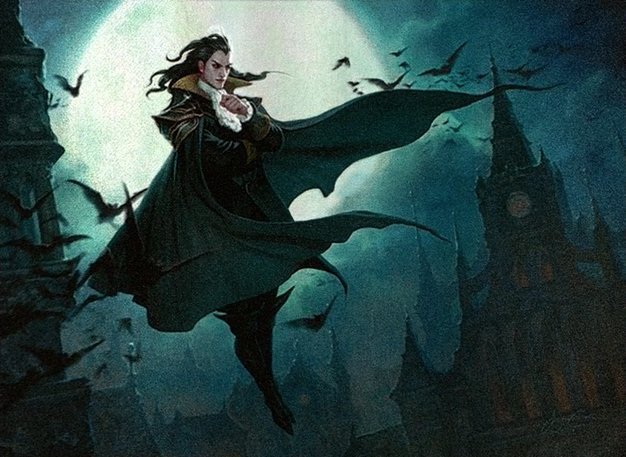








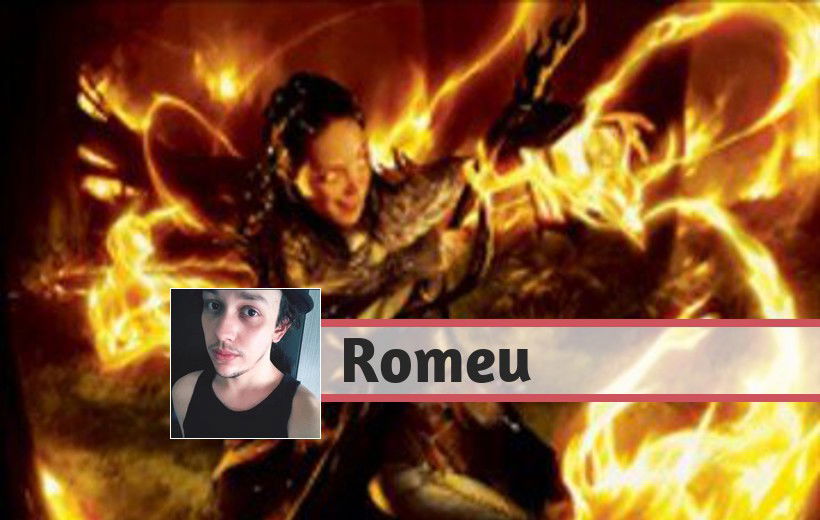



— Comments 0
, Reactions 1
Be the first to comment